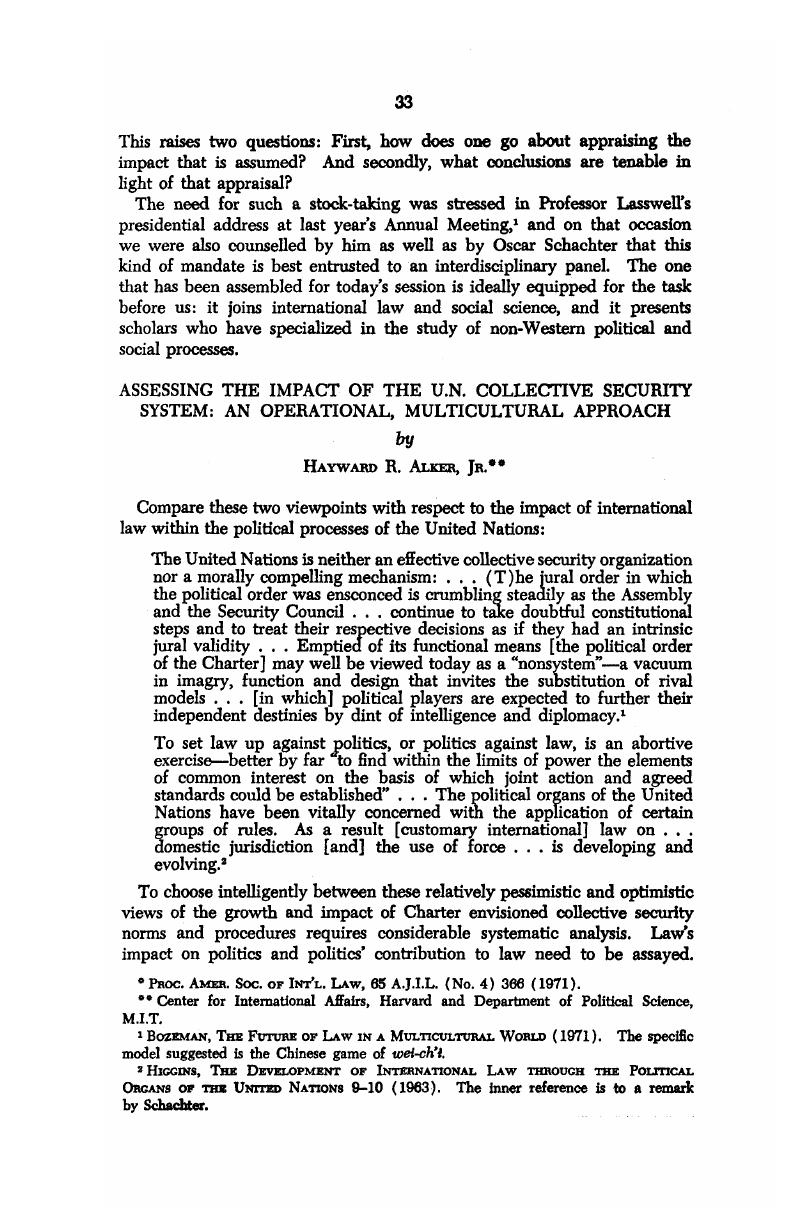No CrossRef data available.
Published online by Cambridge University Press: 28 March 2017

* PROC. AMER. SOC. OF INT’L. LAW, 65 A.J.I.L. (No. 4) 366 (1971).
1 Bozeman, The Future of Law in a Multicultural World (1971). The specific model suggested is the Chinese game of wei-ch’i.
2 Higgins, The Development of International Law Through the Political Organs of the United Nations 9–10 (1963). The inner reference is to a remark by Schachter.
3 The minimal set of relevant reference for the present exercise are: Barkun, Law Without Sanctions (1968); Keesing, , Formalization and the Construction of Ethnographies, in Explorations in Mathematical Anthropology (Paul Kay, ed. 1971)Google Scholar; Alber, and Christensen, , From Casual Modelling to Artificial Intelligence: The Evolution of UN Peace Making Simulation, in Experimentation and Simulation in Political Science (LaPonce, and Smoker, eds. 1972)Google Scholar; and Alker, and Greenberc, , The UN Charter: Alternate Pasts and Alternate Futures, in The United Nations: Problems and Prospects (Fedder, E. H. ed. 1971)Google Scholar. Work on the Alker-Christensen-Greenberg U.N. simulation is still progressing.
4 Sources for this brief review include U.N. documents and commentaries, particularly, A. Dallin, The Soviet Union at the United Nations (1962); Hoffman, , In Search of a Thread: The UN in the Congo Labyrinth, 16 INT’L ORG, 33–61 (1962)Google Scholar; and Gross, L., Domestic Jurisdiction, Enforcement Measures and the Congo, in Australian Y.B. OF INT’L LAW 1965 at 137–58 (1966)Google Scholar.
5 Surely, the way to representing higher order legal principles like reciprocity, jus cogens, or national sovereignty in rule-following models deserves more research. Belief system simulations do allow such complexities. Relevant literature includes Allen, , Automation: Substitute and Supplement in Legal Practice, 7 Amer. Behavioral Scientist 39–44 (1963)CrossRefGoogle Scholar; J. Loehlin, Computer Simulations or Personality; K. Goldman, International Norms and War Between States (1971); and T. Winnograd, Procedures as a Representation for Data in a Computer Program for Understanding Natural Language (Project MAC, doc. MAC TR-84, MIT, 1971).